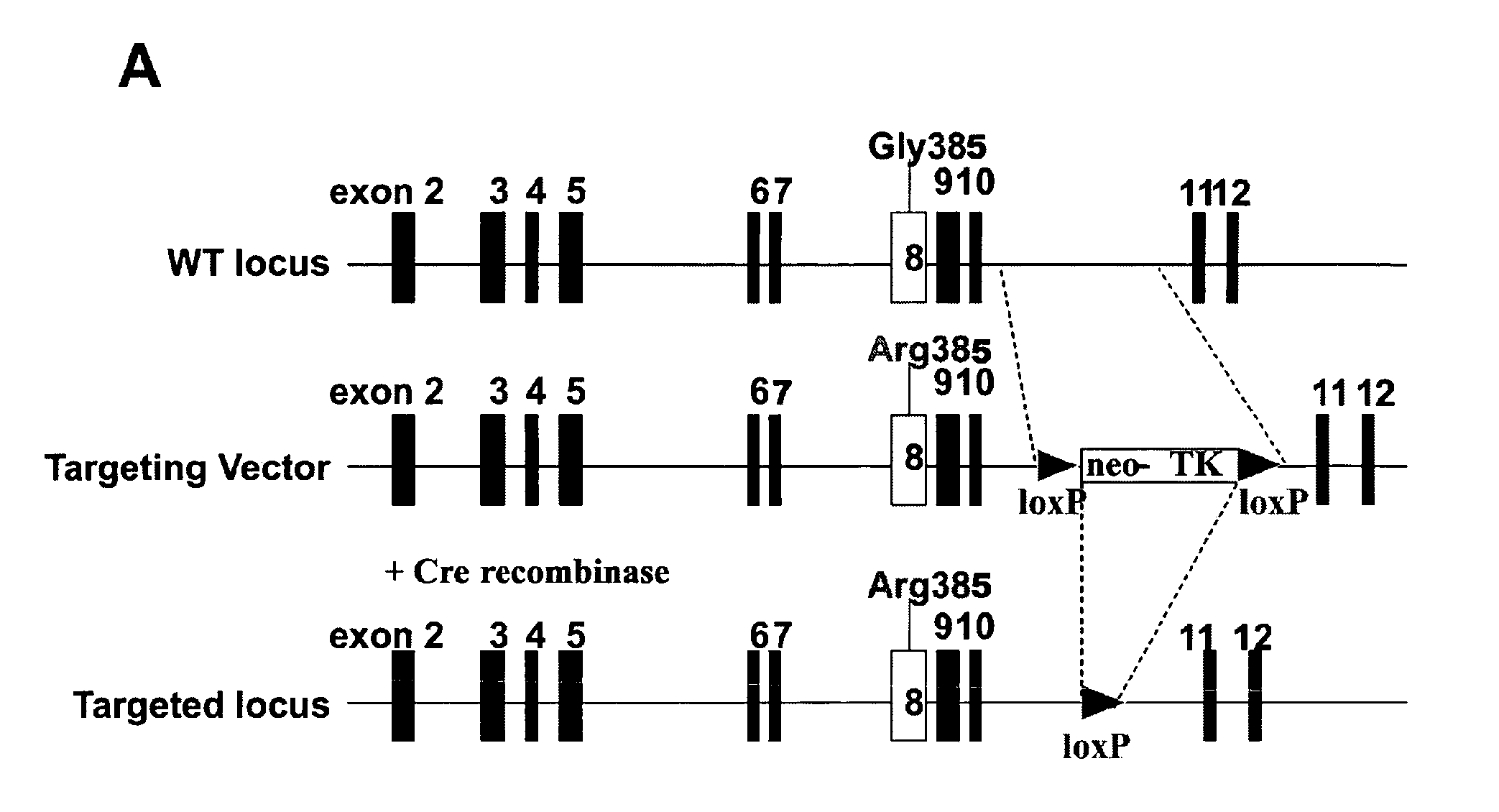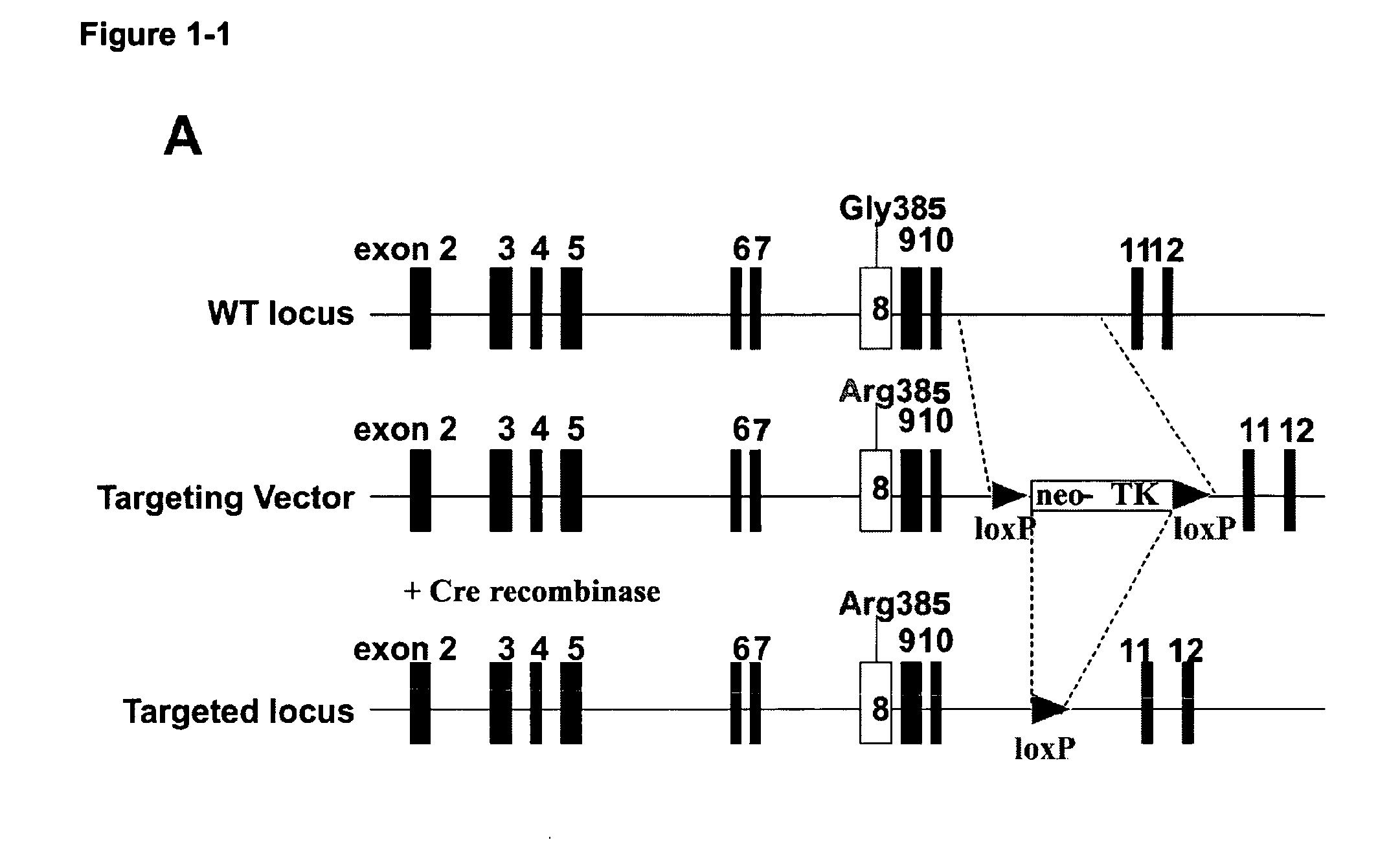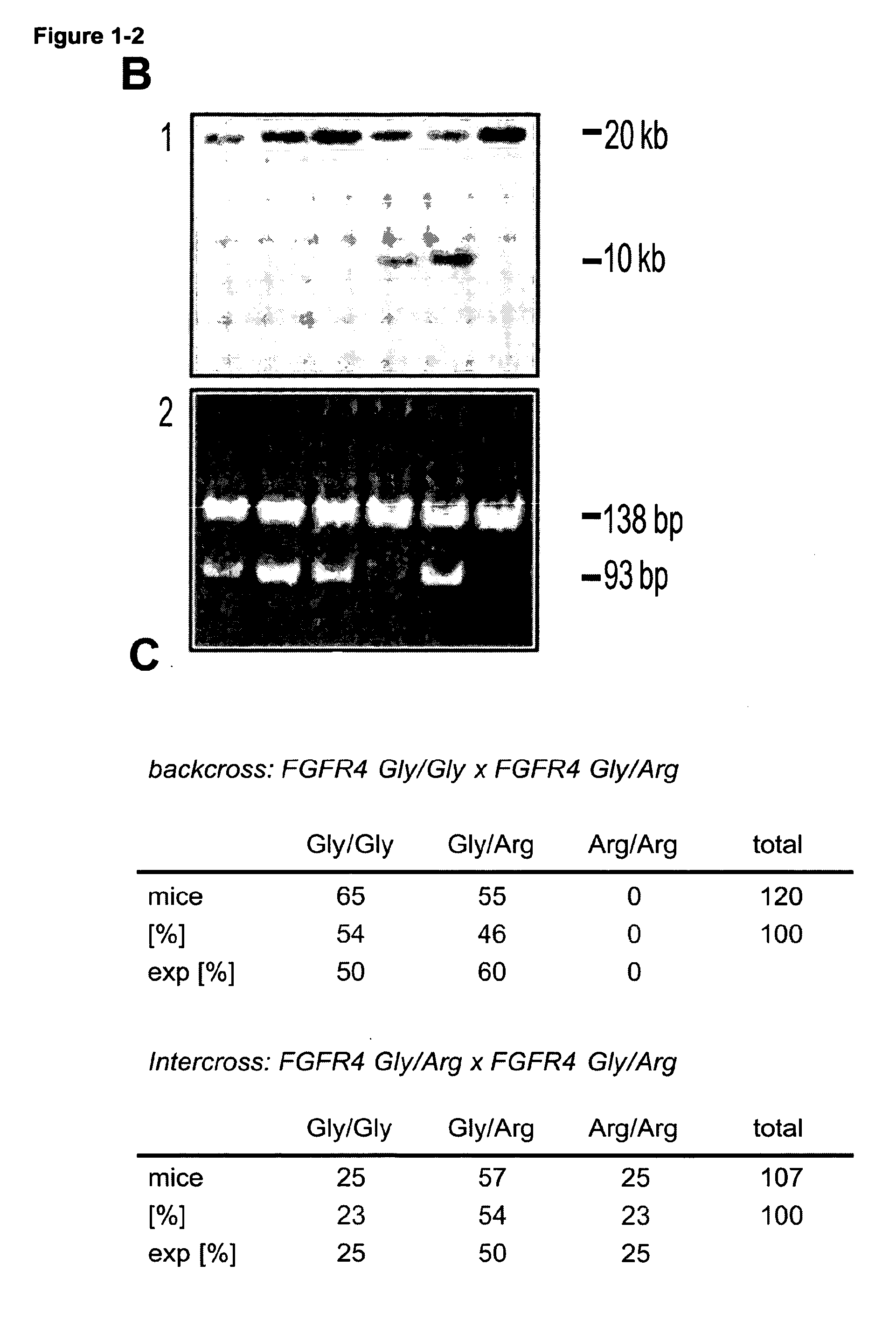Rodent cancer model for human fgfr4 arg388 polymorphism
a cancer model and human fgfr4 technology, applied in the field of rodent cancer model for human fgfr4 arg388 polymorphism, can solve the problems of reducing overall patient survival and advanced tumor stage, and achieve the effect of increasing tumor growth and/or metastasis formation
- Summary
- Abstract
- Description
- Claims
- Application Information
AI Technical Summary
Benefits of technology
Problems solved by technology
Method used
Image
Examples
examples
[0210]Here we show in a genetically “clean” system the impact of a single nucleotide difference in the codon 385 of the mouse FGFR4 gene that converts a Glycine to an Arginine in the transmembrane domain of the receptor, on mammary cancer progression in vivo. We generated a FGFR4 Arg385 knock-in (KI) mouse model in order to investigate the effect of the two different FGFR4 alleles on breast cancer progression. For this purpose we crossed the FGFR4 Arg385 KI mice to WAP-TGFα / EGFR transgenic mice (19, 20). In this model, TGFα-overexpression is controlled by the whey acidic protein (WAP) promotor which specifically activates the transgene in mammary epithelial cells in mid-pregnancy (19). Thus, the process of mammary carcinogenesis is promoted by the constitutively high overexpression of TGFα, a ligand of the epidermal growth factor receptor (EGFR). Overexpression of TGFα in mammary epithelial cells results in accelerated alveolar development and impaired cell differentiation leading t...
PUM
| Property | Measurement | Unit |
|---|---|---|
| Digital information | aaaaa | aaaaa |
| Cell growth | aaaaa | aaaaa |
Abstract
Description
Claims
Application Information
 Login to View More
Login to View More - R&D
- Intellectual Property
- Life Sciences
- Materials
- Tech Scout
- Unparalleled Data Quality
- Higher Quality Content
- 60% Fewer Hallucinations
Browse by: Latest US Patents, China's latest patents, Technical Efficacy Thesaurus, Application Domain, Technology Topic, Popular Technical Reports.
© 2025 PatSnap. All rights reserved.Legal|Privacy policy|Modern Slavery Act Transparency Statement|Sitemap|About US| Contact US: help@patsnap.com



